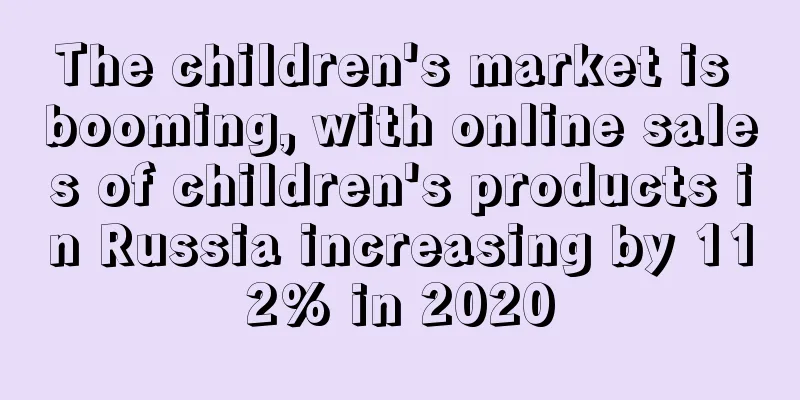U.S. holiday e-commerce returns could reach $45 billion

|
Although the peak season is an opportunity to increase sales, the return rate will also be higher than usual. Many sellers have reported that returns are rampant during the peak season, especially for Christmas-related decorations.
According to Mastercard SpendingPulse , retail sales in the United States increased by 8.5% from November 1 to December 24, of which online sales accounted for 20.9% of total retail sales , higher than 20.6% in 2020 and 14.6% in 2019. Online sales increased by 11% year-on-year .
Moreover, according to data released by USPS on December 20, more than 9 billion pieces of mail and parcels have been received since Thanksgiving on November 25. This number exceeded 9.8 billion on December 22. At that time, it was expected that the volume of letters, cards and parcels on New Year's Day would reach 12 billion.
But at the same time, the return rate is also increasing. The main reasons for returns include the product itself not being consistent with the description, wrong goods being sent, delayed delivery, etc.
B-Stock is one of the world's largest online platforms for overstocked inventory and customer returns, processing returned merchandise for nine of the top ten retailers in the United States, including Walmart, Target and Amazon. B-Stock predicts that the value of returned merchandise after the holidays may reach $112 billion to $114 billion, of which about $43 billion to $45 billion will come from e-commerce orders. Its chief operating officer said that up to 13.3% of holiday products will be returned this year .
In addition, platforms such as Amazon have extended the holiday return period, which increases the possibility of returns, thus adding pressure to the already tight supply chain. On the other hand, the National Retail Federation said that innovations such as online return portals have simplified the return experience , such as the rise of third-party delivery locations, which allow customers to bring unpacked items to local stores or delivery points , easing delivery pressure to a certain extent.
Returns are also a big burden for third-party sellers. Many sellers say that their holiday decorations have become charity products. "Buy before the holiday, return after use after the holiday," which provides some unscrupulous consumers with a legitimate opportunity to get something for free. This phenomenon is especially common with Christmas decorations, small cards, and costume props.
Returns are also a very troublesome problem for cross-border sellers. Sellers must also take necessary measures to improve quality and reduce the occurrence of returns. USA return the goods Peak Season |
>>: E-commerce grocery sales to grow 21% in 2022
Recommend
With an average monthly expenditure of over 4,000 yen, women account for half of the Japanese health functional food market
Japan's Yano Research Institute conducted a c...
What is OFweek? OFweek Review, Features
OFweek is a comprehensive portal website for China...
Update of Top 100 Amazon sellers! Anker dropped to No. 3
In September, the list of "Top Sellers in Am...
What is EnjoyGoing Global? EnjoyGoing Global Review, Features
EnjoyGo Global is a mobile developer overseas ser...
Americans spend more on Amazon than they save! Necessities are their top purchases
E-commerce has successfully changed the way peopl...
What is Zhongta Logistics (Shenzhen Zhongta Logistics Co., Ltd.)? Zhongta Logistics (Shenzhen Zhongta Logistics Co., Ltd.) Review, Features
Shenzhen Zhongta Logistics Co., Ltd. focuses on s...
TikTok live streaming sales will be popular in 2022, and small and medium-sized sellers will also have opportunities to join the market
Sumayah Saadi, a graduate of the London School of...
It’s outrageous! Amazon AI summarizes the seller’s positive reviews of the product into negative reviews
In the new era, the application of artificial int...
What is imalentstore? imalentstore Review, Features
imalentstore is an online store that specializes i...
SHEIN launches 150+ industry belt docking and becomes the most popular shopping app
The latest ranking of the best shopping apps for ...
What is Digital Cross-border BI? Digital Cross-border BI Review, Features
Digital Cross-border BI is a SaaS version of BI J...
What is Qianmo International Logistics? Qianmo International Logistics Review, Features
Qianmo International Logistics (Shenzhen Qianmo I...
What is Cross-border Ark? Cross-border Ark Review, Features
Ark Cross-border is a seller in Fujian that mainl...
Shopify Announcement: Will Help Sellers Test Third-Party Software
According to foreign media reports, Shopify relea...
Yuanqi Forest breaks into the top ten of Amazon's best-selling list, and Chinese food exports are booming!
"Sugar-free drinks" are popular, and Yu...









